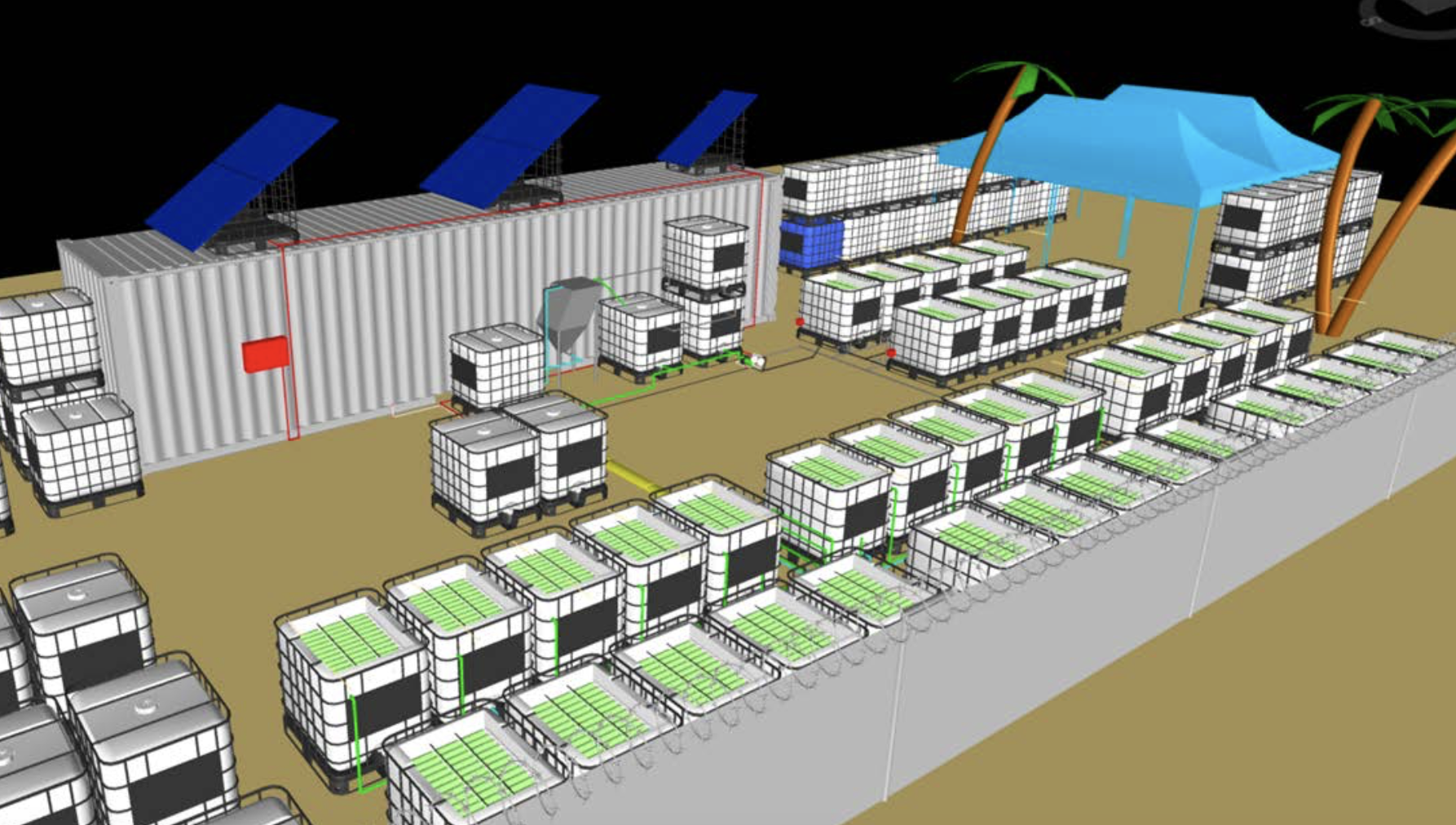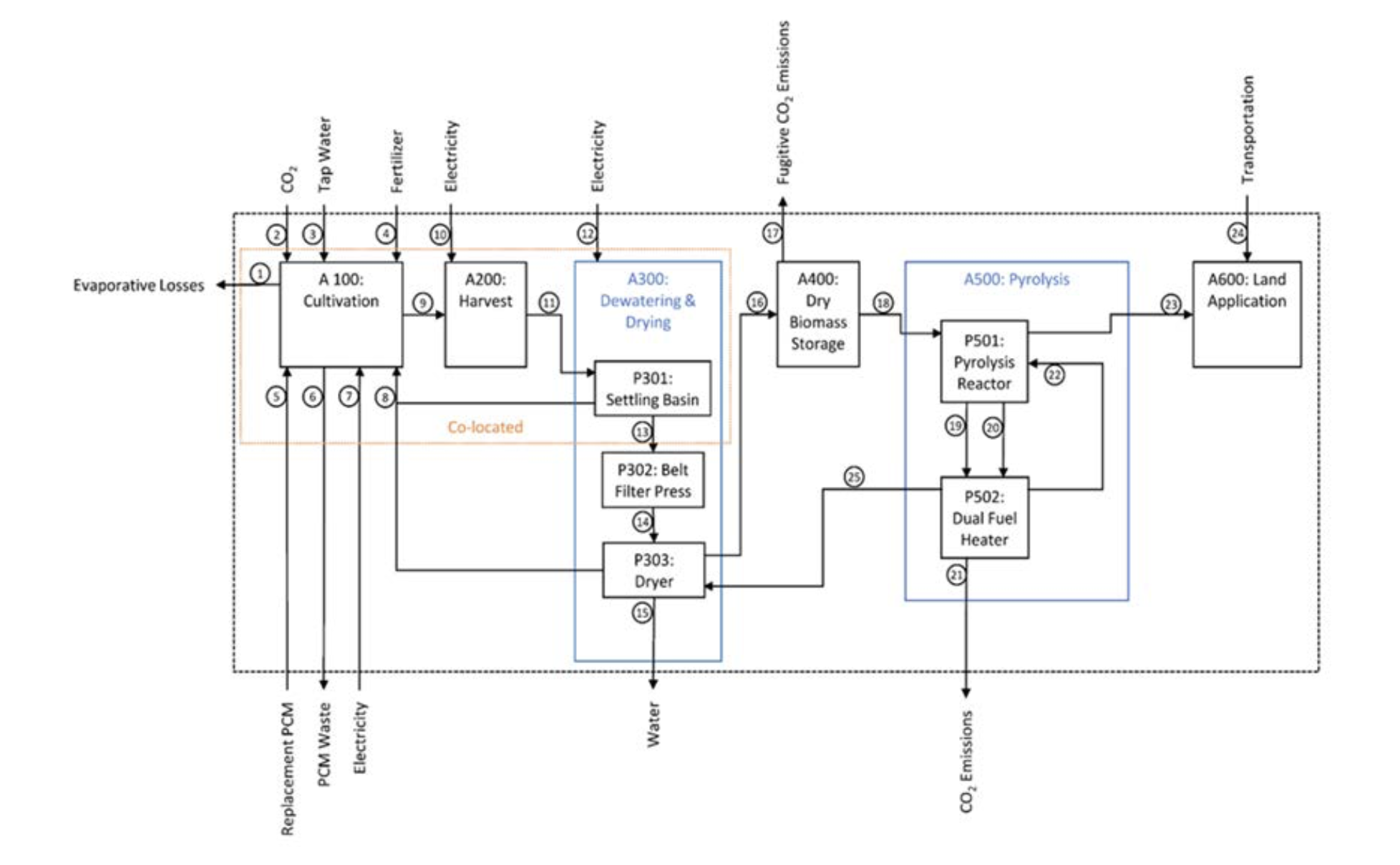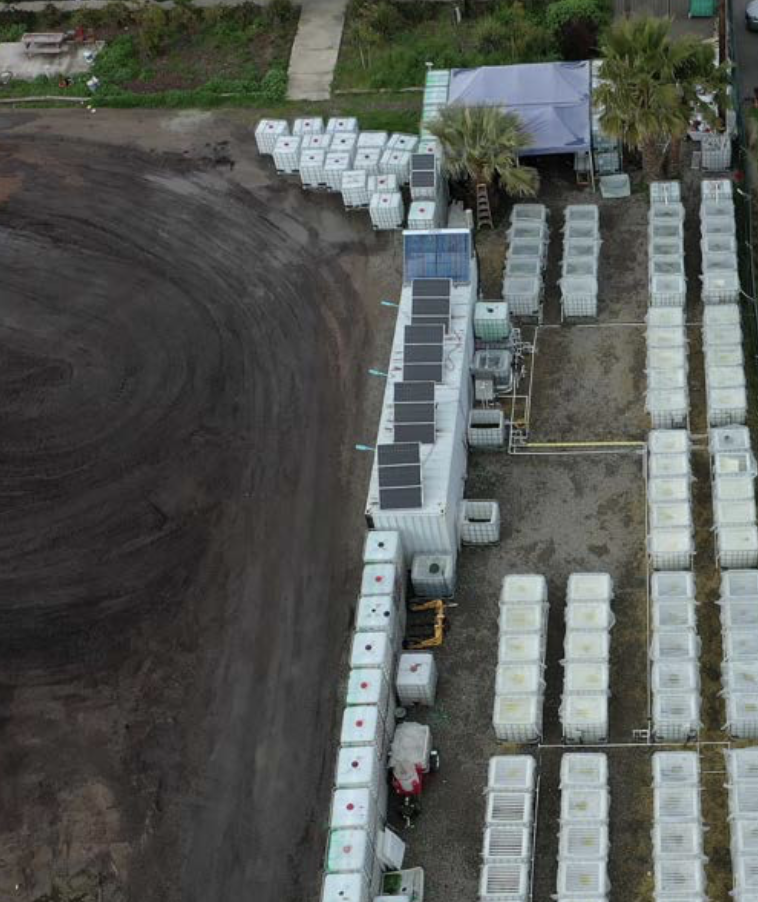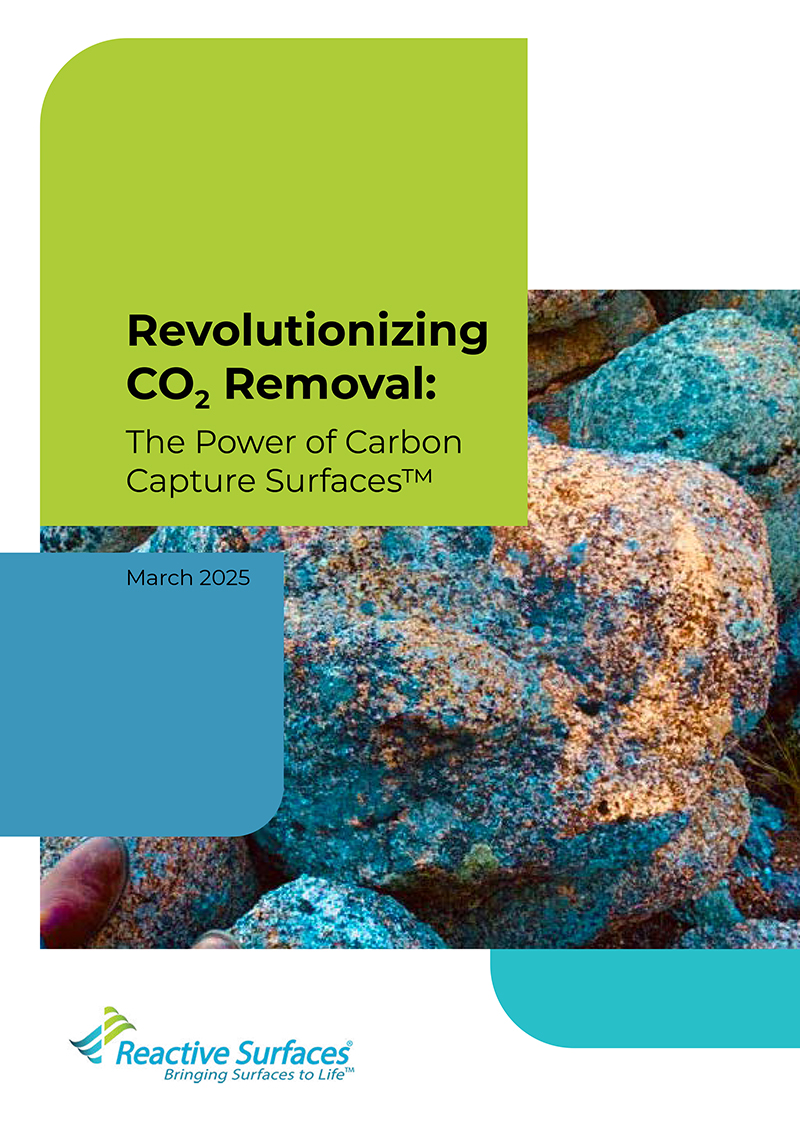As the world desperately seeks effective, scalable technologies to tackle climate change and prevent the ubiquitous harm that unchecked global warming will have on humanity, innovative carbon dioxide removal (CDR) technologies are becoming more essential than ever.
Among these, Carbon Capture Surfaces™ (CCS), by Reactive Surfaces™ for Like Lichen™, emerges as a cutting-edge solution that is effective, cost-efficient, verifiable, and scalable and avoids risks inherent in other existing CDR technologies while creating significant opportunities in this burgeoning subset of the sustainability industry
Born of a biotech innovation company operating in the paint and coatings industry (Reactive Surfaces), CCS is a Direct Air Capture (DAC) CDR technology, meaning that the system can capture and sequester ambient CO2. The system can further be adapted to capture point-source CO2 emitted from an industrial process. Harnessing the combined power of biological processes, sustainable energy sources, and polymer and material science, Reactive Surfaces has innovated a safe, reliable, non-toxic solution that can be scaled in time to meet the urgent need to fight climate change by dramatically reducing the amount of CO2 in our atmosphere.
CCS was ranked a Top 100 Finalist in the $100 Million Carbon Removal X-Prize, to be awarded for the development of the lowest cost CDR technology to capture and sequester 1,000 tons of ambient CO2. See the XPrize video here.
In this publication, we will:
- Delve into the carbon capture mechanism and sequestration system that is CCS, and demonstrate why it meets or exceeds stringent criteria required in order to be considered a High-Quality Carbon Credit.
- Learn how the CCS technology can scale to meet relevant levels of CDR in time to make a difference in climate change, and
- Learn how bio-based, non-toxic functional coatings and surfaces can help to alleviate the impact of other critical world challenges, such as preventing the spread of microbes and viruses on surfaces.

CARBON CAPTURE SURFACES – mimicking the power of Lichen in nature!
We’ve all seen them on walks and hikes… every- colour-in-the-rainbow patches splashed all over rocks, trees, and soils, very tightly adhering to the underlying substrate. Lichen are comprised of both a fungus and an algae. If you were to slice through a lichen and look at its microscopic structure, you would see algae cells gently embraced by fibrous strands. These fibrous strands are the fungus.
In lichen, the algae do the work of photosynthesis, capturing atmospheric CO2, while the fungus provides a safe refuge for the algae, preventing 2the algae from overgrowing, while allowing it to receive all the nutrients, gas exchange, water and sunlight it needs while shielding it from too much UV. Carbon Capture Surfaces were designed to mimic lichen…the algae is embedded and grows on special surfaces which allow the algae to grow…just like the fungus in lichen…receiving all the elements necessary to promote photosynthesis and the resulting carbon capture.

The Carbon Capture Surfaces System – Working to Capture and Sequester Atmospheric CO2
Microalgae is well-established as being one of the most effective tools in the fight against climate change. These microorganisms play a crucial role in photosynthesis already, generating 50-70% of the oxygen we breathe.
CCS consists of specialized porous sheets infused with proprietary bio-based functional coatings and inoculated with microalgae. These algae-embedded sheets are housed in compact, 1m3 stackable freight containers. As the microalgae grow and photosynthesize on the surfaces, they capture CO2 from the air, forming an algal biomass that locks in the carbon. Each module contains more than 10m2 of growth substrate surface area, multiplying the amount of CO2 captured per sq. meter footprint on the ground.
Each module is monitored by digital sensors that measure gas exchange and other key environmental conditions. Once sufficient biomass has accumulated, it is harvested from the sheets, dried, and processed. The captured CO2 can be securely stored in a closed-loop sequestration system, ensuring zero leakage. Alternatively, the biomass can undergo pyrolysis, converting it into biochar, a valuable soil amendment that locks carbon into the ground for centuries. Check out this short video explainer for Carbon Capture Surfaces technology!
This low-cost, solar-powered modular system is easily deployable across various locations – including farms, industrial sites, schools, and even residential backyards. And each ton of CO2 verifiably captured and sequestered in a CCS system would be eligible to trade on the Voluntary Carbon Offset Market – allowing individuals and businesses to take an active role in and benefit from climate solutions. For the first time, personal CO2 offsetting is now a possibility.
The comprehensive CCS system is set forth in the boundary diagram below:

Meeting the Standards for High-Quality Carbon Credits (HQCC’s)
For a carbon offset credit to be classified as an HQCC, it must meet six critical criteria: Additionality, Quantification, Permanence, Verification, Transparency & Reporting, and Co-Benefits.
- Additionality:
- CCS systems are designed exclusively for CO2 removal, ensuring that the sequestration would not occur without such projects. The financial backing of the carbon credit market is crucial to its success.
- Quantification:
- The Digital Monitoring, Reporting and Verification systems (dMRV’s) of the CCS System will ensure that all CO2 removals are accurately measured, guaranteeing accuracy and transparency in reporting.
- Permanence:
- Captured CO2 is dried into a powder and stored securely in a closed-loop system or converted into biochar, ensuring sequestration for hundreds of years.
- Verification:
- Independent third-party verification is integral to maintaining credibility. Auditors will regularly assess CCS projects to verify capture performance, energy efficiency, and storage integrity.
- Transparency & Reporting:
- The CCS system together with the dMRV mechanism enabled by a novel dMRV platform, ensures robust carbon accounting, and operational efficiency.
- To prevent double-counting and enhance trust, CCS credits will be housed on the blockchain and listed in public registries for easy tracking. Blockchain technology integrated within a novel carbon accounting platform guarantees the traceability and transparency of these removals, enabling the issuance of HQCC’s.
- Comprehensive reports will detail methodologies, capture metrics and verification outcomes, ensuring full accountability.
- Societal and Social Justice Co-Benefits:
- CCS’s modular design supports rural economies by enabling farmers to repurpose fallow land and contributes to soil conservation and biodiversity enhancement. The fact that CCS doesn’t compete with other land uses, such as forestry or farmland is important, and completely achievable, inasmuch as the system requires nothing more than level land.
- Throughout the world, farmers, even micro-farmers, can benefit from deploying a CCS farm on their land. This can be especially impactful in parts of the world where women suffer discrimination and a disproportionate amount of poverty.

How many CCS Modules does it take to Remove a Ton of CO2?
- At this point in time, a 1-acre CCS farm containing 1,000 1m3 modular units can remove approximately 100 tons of atmospheric CO2 per year.
- In contrast, a 1-acre forest only captures between 1.5 and 6 tons of CO2 per year.
- With further optimization, before 2030, the system is expected to scale to remove up to 500-1,000 tons of atmospheric CO2 per one-acre CCS farm. At this level, it would only take 1-2 million acres to remove a billion tons (one ‘Gigaton’) of atmospheric CO2. With 800 million acres of farmland in the US alone, another 2.7 Billion more farmable acres in Africa, and so on throughout the world, there is plenty of unused farmland to implement this climate change solution at a relevant level to make a difference in climate change.
- Scaling to a gigaton is well within our reach!

CCS Technology Used to Capture Point-Source Emissions
CCS can be further utilized to capture point source CO2 emissions from industrial operations. CO2 point source emissions can be piped directly into a CCS system, and permanently sequestered within that process.
CCS Avoids Risks of Other CDR Technologies
Unlike CCS, many of the CDR technologies existing today rely on the injection of captured CO2 one to two miles down into the earth for permanent sequestration. While it is recognised that with careful site selection and consistent maintenance of geologically-sequestered CO2, the risks of such an activity, such as contamination of water tables and seismic disturbances, can be reduced or minimized. However, there is always inherent risk involved in the transportation, drilling and storage of CO2 that must be considered in comparing CDR technologies or making a determination that a carbon offset is an HQCC.
Further to the risk factor, it’s estimated that the amount of infrastructure (pipelines and wells) that would be required to sequester billions of tons of captured CO2 in deep geological wells would be enough to circle the earth and more. Each pipeline and each injection well would need to be permitted and built. As such, the accompanying permitting and construction risk must also be accounted for.
Key Features of CCS Technology:
- High Efficiency in a Small Footprint:
- Each 1m3 CCS module contains many multiples of algae-growing surface area over its footprint on the ground, allowing for maximum aerial CO2 capture.
- Advanced Monitoring:
- Sensors track CO2 capture, oxygen release, and environmental conditions for real-time optimization.
- Minimal Resource Requirements:
- The system captures water from the atmosphere, and materials like water, nutrients, and coatings are fully recycled within the unit.
- Powered by Renewable Energy:
- The solar-powered design ensures low operational costs and sustainability.
- Deployable in Various Locations:
- The system adapts to different climates and terrains using region-specific algae strains.
Carbon Capture Surfaces – Scaling to Meet the Gigaton CDR Challenge
To prevent catastrophic climate change, global greenhouse gas emissions must decrease by 45% by 2030 and reach net-zero by 2050, according to the Intergovernmental Panel on Climate Change (IPCC). Yet, current policies are failing, with emissions continuing to rise. Without aggressive action, the world is on track for 2.5-3°C of warming within the 21st century, leading to severe weather events, rising sea levels, and widespread ecosystem disruptions during our lifetimes, and those of our children and grandchildren.
In addition to cutting emissions, the IPCC estimates that 100 to 1,000 billion tons (Gigatons) of CO2 must be removed from the atmosphere throughout this century. By 2050, annual CO2 removal must reach 1 to 10 gigatons, but current carbon dioxide removal (CDR) methods are far from meeting these targets due to economic and scalability challenges.
The Current State of CDR: Falling Critically Short of Climate Goals
At this point, you may be thinking that you recall hearing there are millions of tons of ambient CO2 currently being captured each year in the oil fields, such as West Texas’ Permian Basin.
To avoid confusion, it should be mentioned that not all carbon capture processes count as true CDR. For example, carbon capture for enhanced oil recovery does not yield net- negative emissions, as the CO2 that is captured is used to extract more fossil fuels. To be a CDR technology, the solution must be carbon- negative, meaning they capture more CO2 than they emit in their processes from start to finish.
As of 2025, global CDR efforts are significantly lagging. While 1-10 gigatons of CO2 removal per year is required by 2050, if we exclude low-tech removal solutions that are notably unreliable or predictable, existing high-tech CDR technologies are only removing about 2 million tons of ambient CO2 per year – a tiny fraction of what is needed. Moreover, given that we are not meeting our emission reduction targets, we should plan on implementing even more CDR to compensate for that shortfall.
Clearly, with global emissions on the rise and existing CDR technologies not scaling to meet the need quickly enough, the demand for affordable, reliable, scalable, and widely deployable CDR solutions has never been more urgent. Yet, developers like Reactive Surfaces need significant capital to scale to a level within a relatively short period of time (billions of tons by 2030), in order to avoid serious climate change tipping points. Which brings us to the necessary query,
“What’s the business case for an investment in effective CDR?”
Which sadly actually translates into a critical analysis something like:
“Sure, we face impending disaster of Biblical proportions if we continue our global warming trajectory for the next 50 years, but before we take action, let’s calculate the Return on Investment for the business case…to make sure we are worth saving.”
Fortunately, we can defer to the global market intelligence and strategy consultant, McKinsey and Company to provide some insight to this query. McKinsey had this to say about suppliers of technology-based CDR.
“Suppliers (CDR project developers that generate carbon credits based on capture and storage activities) could earn 73 to 82 percent of estimated CDR market revenues – $250 billion to $900 billion – by 2050. Because they carry out physical removal activities (such as carbon capture, transport, and storage) while other market players enable their efforts, suppliers could capture the largest share of industry revenues. When demand scales…suppliers will need to be able to respond rapidly to meet it. Early movers could be positioned to develop approaches to move down the learning curve sooner than those who engage later, thereby reducing early movers’ costs.”Carbon removals: How to scale a new gigaton industry | McKinsey.


